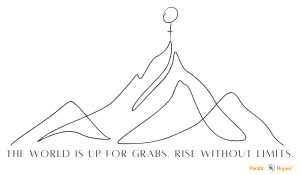**DISCLAIMER: This is not the official WorksafeBC website. The posts below are merely our interpretation and not official WorksafeBC regulation. To make sure you comply, please visit https://www.worksafebc.com/en.
As a professional rope access technician, you’ll use your personal logbook to record all of your at-height work experience. This logbook will help you to track your hours, ensure you’re not being overworked (most techs log about 20-40 hours per week), and will be your proof of eligibility if you decide to upgrade your certification with IRATA or SPRAT. Depending on whether you’ve been certified through SPRAT or IRATA, there are different expectations regarding the amount of hours you’ll need to log before being permitted to upgrade. More information can be found in 6-6.4 of SPRAT Evaluation Guidelines and/or 4.13 of IRATA TACS.
WorksafeBC also expects you to be logging your work hours on rope. There is no WorksafeBC logbook. However, if asked by a WorksafeBC representative, you'll need to show with your SPRAT or IRATA logbook. This means you'll need to have it with you a work.
Here is what they expect to see in your logbook:
- Date(s) – the individual or consecutive days you worked. These dates should be listed in chronological order.
- Ex: It’d be appropriate to write June 5-8, 2018, but not simple ‘June’.
- The type of work performed.
- Ex: painting roof truss, removing lose concrete, etc.
- The type of rope access system you used (your access method). You may also need to list the max height you worked for each contract. Use metres.
- Ex: Double rope abseil, aid climb on wire strops, retractable fall arrest, work restraint, etc.
- The type of building or structure you worked on. You’ll also need to list the work site address.
- Ex. Residential 1960’s tower block, concrete water tower, football stadium under construction, etc. Be specific.
- The number of hours worked using rope access.
- Only include the hours you actually spent performing rope access duties (ex. time spent working in suspension, rigging, inspecting, or training others). Usually this is about 2/3- 3/4 of the total hours you were on site.
Keep your logbook properly filled out and up-to-date and bring it with you to work every single day. Use blue or black ink for the entries. Your rope access supervisor, or the manager in charge, will be signing off on your hours daily (or weekly, if you’re working consecutive days). You’ll also need to have it handy for scheduled or unscheduled inspections by an officer.
Here are some additional resources you may find helpful:
- How to Successfully Fill In Your Logbook
- Rope Access Logbook Q&A
- What to Do When You Need a Replacement Logbook
- As a Manager, Can I Sign Logbooks?
To understand the rest of Part 34, click here:




